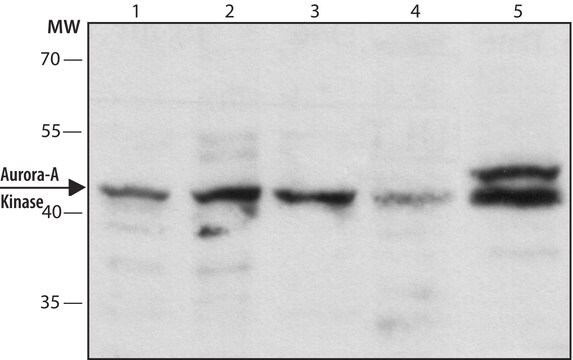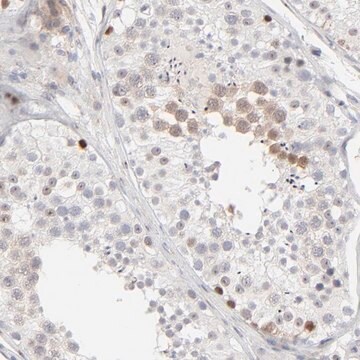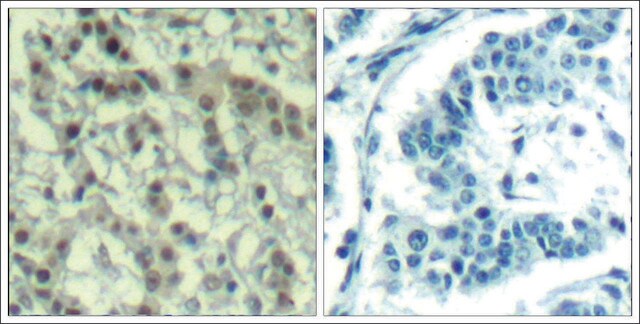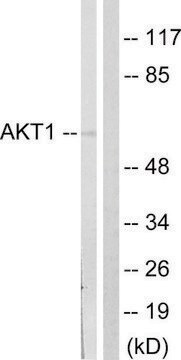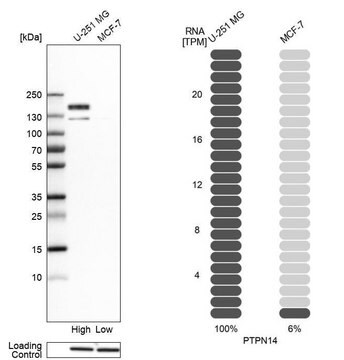詳細
We are committed to bringing you greener alternative products, which adhere to one or more of The 12 Principles of Green Chemistry.This antibody is Preservative-free, produced without the harm or sacrifice of animals and exceptionally stable to allow for ambient shipping and storage if needed and thus aligns with "Waste Prevention", "Designing Safer Chemicals" and "Design for Energy Efficiency".
Click here for more information.
ZooMAb® antibodies represent an entirely new generation of recombinant monoclonal antibodies.Each ZooMAb® antibody is manufactured using our proprietary recombinant expression system, purified to homogeneity, and precisely dispensed to produce robust and highly reproducible lot-to-lot consistency. Only top-performing clones are released for use by researchers. Each antibody is validated for high specificity and affinity across multiple applications, including its most commonly used application. ZooMAb® antibodies are reliably available and ready to ship when you need them.
特異性
Clone 1B17 is a ZooMAb® Rabbit recombinant monoclonal antibody that specifically detects Aurora Kinase A. It targets an epitope within 24 amino acids from the N-terminal half.
免疫原
KLH-conjugated linear peptide corresponding to 24 amino acids from the N-terminal half of human Aurora Kinase A (Aurora A).
アプリケーション
Quality Control Testing
Evaluated by Western Blotting in NIH3T3 cell nuclear extract.
Western Blotting Analysis: A 1:1,000 dilution of this antibody detected Aurora A in NIH3T3 cell nuclear extract.
Tested applications
Western Blotting Analysis: A 1:1,000 dilution from a representative lot detected Aurora A in lysate from HeLa cells treated with Nocodazole (40 ng/mL; 8 h).
Immunohistochemistry (Paraffin) Analysis: A 1:100 dilution from a representative lot detected Aurora A in human tonsil tissue sections.
Immunocytochemistry Analysis: A 1:100 dilution from a representative lot detected Aurora A in HeLa cells.
Affinity Binding Assay: A representative lot of this antibody bound Aurora A peptide with a KD of 4.6 x 10-6 in an affinity binding assay.
Note: Actual optimal working dilutions must be determined by end user as specimens, and experimental conditions may vary with the end user
Evaluated by Western Blotting in NIH3T3 cell nuclear extract.
Western Blotting Analysis: A 1:1,000 dilution of this antibody detected Aurora A in NIH3T3 cell nuclear extract.
ターゲットの説明
Aurora kinase A (UniProt: O14965; also known as EC:2.7.11.1, Aurora 2, Aurora/IPL1-related kinase 1, ARK-1, Aurora-related kinase 1, hARK1, Breast tumor-amplified kinase, Serine/threonine-protein kinase 15, Serine/threonine-protein kinase 6, Serine/threonine-protein kinase aurora-A) is encoded by the AURKA (also known as AIK, AIRK1, ARK1, AURA, AYK1, BTAK, IAK1, STK15) gene (Gene ID: 6790) in human. Aurora kinases are serine/threonine kinases essential for the onset and progression of mitosis. Three members of this family have been described and are known as Aurora A, B, and C. Aurora A is highly expressed in testis and its higher expression has been reported in breast and cervical cell lines. Its expression is cell-cycle regulated with lower levels observed during G1/S phase and it accumulates during G2/M phase and decreases rapidly thereafter. It associates with the centrosome and the spindle microtubules during mitosis and plays a critical role in various mitotic events including the establishment of mitotic spindle, centrosome duplication, centrosome separation as well as maturation, chromosomal alignment, spindle assembly checkpoint, and cytokinesis. Aurora A is shown to be essential for initial activation of Cdk1 at centrosomes and it phosphorylates a number of target proteins. It is reported to act as a key regulatory component of the p53/TP53 pathway, and particularly the checkpoint-response pathways critical for oncogenic transformation of cells, by phosphorylating and destabilizing p53/TP53. The protein kinase domain of Aurora A is localized in amino acids 133-383. The kinase domain contains a β-stranded N-terminal lobe and an -helical C-terminal lobe that are linked together by a hinge region responsible for the active conformation. It is activated by phosphorylation at threonine 288, which brings about a change in the conformation of the activation segment (aa 280-293). Phosphorylation at threonine 288 varies during the cell cycle and is highest during the M phase. Binding of protein phosphate 1 (PP1) to Aurora A inhibits its activity by dephosphorylating threonine 288 during mitosis. This ZooMAbZooMAb® recombinant monoclonal antibody, generated by our propriety technology, offers significantly enhanced specificity, affinity, reproducibility, and stability over conventional monoclonals. (Ref.: Willems, E., et al. (2018). Cell Division. 13; Article 7; Katayama, H., et al. (2004). Nat. Genet. 36(1); 55-62; Walter, AO., et al. (2000). Oncogene. 19(42); 4906-4916).
物理的形状
Purified recombinant rabbit monoclonal antibody IgG, lyophilized in PBS, 5% Trehalose, normal appearance a coarse or translucent resin. The PBS/trehalose components in the ZooMAb formulation can have the appearance of a semi-solid (bead like gel) after lyophilization. This is a normal phenomenon. Please follow the recommended reconstitution procedure in the data sheet to dissolve the semi-solid, bead-like, gel-appearing material. The resulting antibody solution is completely stable and functional as proven by full functional testing. Contains no biocide or preservatives, such as azide, or any animal by-products. Larger pack sizes provided as multiples of 25 μL.
保管および安定性
Recommend storage of lyophilized product at 2-8°C; Before reconstitution, micro-centrifuge vials briefly to spin down material to bottom of the vial; Reconstitute each vial by adding 25 μL of filtered lab grade water or PBS; Reconstituted antibodies can be stored at 2-8°C, or -20°C for long term storage. Avoid repeated freeze-thaws.
法的情報
ZooMAb is a registered trademark of Merck KGaA, Darmstadt, Germany
免責事項
Unless otherwise stated in our catalog or other company documentation accompanying the product(s), our products are intended for research use only and are not to be used for any other purpose, which includes but is not limited to, unauthorized commercial uses, in vitro diagnostic uses, ex vivo or in vivo therapeutic uses or any type of consumption or application to humans or animals.

